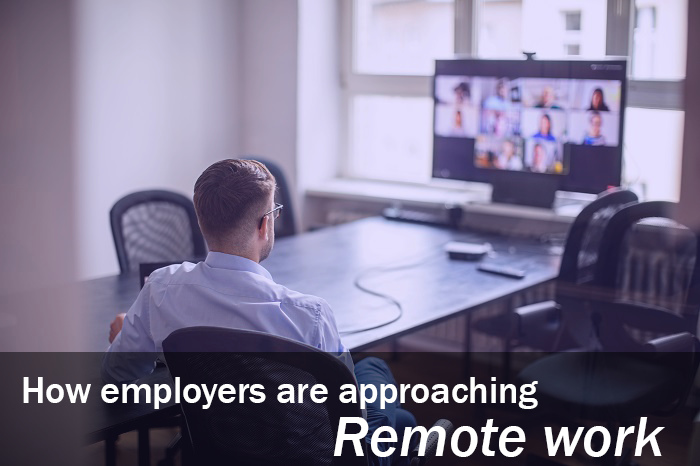As more organizations bring employees back into the workplace during the pandemic, HR professionals face a big hurdle: convincing employees that it’s safe to return.
Many HR professionals are relying on analytics to help prove their case and create workplace policies and practices that keep workers safe. They know which office locations are hot spots for COVID-19, which communities are experiencing outbreaks and which employees are more vulnerable to contracting a serious form of the virus based on their health status. But instead of communicating raw data to employees, leaders are sharing outcomes–what’s being done based on the numbers–to instill trust and confidence in their data-driven decisions.
When communicating with employees about your reopening plans, tell them in an honest and straightforward way how you reached the decision, says John Johnson, CEO of Edgeworth Analytics, a national analytics consulting firm that created a dashboard of data about COVID-19 for the National Football League Players Association.
“Explain the thought process backed up by data,” he says, adding that it can minimize employee fears. “Effectively, give them the information and inform them there’s a plan in place that’s partially data-driven. In the event there’s a COVID flare-up, tell them, ‘Here are the steps we’re going to take.’ It’s more about being prepared with your protocol in advance than necessarily daily reporting to give people comfort.”
Just be careful about what you communicate or report, he says. Releasing too much or too little data, or offering an overwhelming amount of statistics, can confuse workers and lead them to wrong conclusions.
Related: Workers’ comfort over office return
Start the process by identifying data that reveals why reopening now is safe, says Johnson, and explain the type of data HR analyzed to reach this conclusion.
“You can also say, ‘Here are things where we had to make a judgment call,’ ” he says. “Guide them about how to think about [data]. Once you do that, people can make their own assessments and ask questions.”
What Do the Numbers Tell You to Do?
Before returning to the worksite, employees generally expect three pieces of information, says Matt Stevenson, partner and leader of Mercer’s workforce strategy and analytics practice.
- Share your plan for preventing the spread of COVID-19 in the workplace.
- Reveal how you’re identifying external or community risk factors.
- And tell them about new policies or practices that eliminate internal risk factors, such as capping the number of employees who can meet in each conference room.
“Don’t give employees statistics. Tell them what you learned from the statistics,” he says, pointing to examples like the need to create social distancing practices. “By the time you communicate a numerical risk factor, it’s probably wrong, not accurate in some cases and [serves as] an alarmist.”
[click_to_tweet tweet=”#HR #leaders can encourage #employees to #returntowork by focusing more on outcomes and less on data. Learn more” quote=”Tweet this story” theme=”style3″]
It’s no different than when patients visit their doctor for blood test results. Oftentimes, says Stevenson, experienced physicians can quantify the likelihood of someone dying within the next five years just by looking at the numbers. But no doctor would ever tell patients that they have a 45% chance of dying next year. Instead, the doctor would tell them to lose weight, stop smoking or lower their blood pressure.
Opportunity to Brand, Strengthen Culture
Wrong or misinterpreted numbers can create fear, anxiety or even panic in the workplace. But employee communications that are too casual or blasé can produce unintended, even dangerous consequences. Stevenson says some employees may not take wearing a mask, social distancing or washing their hands seriously and then relax their behavior, which could increase their risk, both at work and home.
“Some organizations are looking at their internal analytics to identify risk factors and staging their opening based on that,” Stevenson says. “Tell employees you have a flexible opening plan [and identify] who’s vulnerable, like people who have diabetes or are overweight. Give people the option of staying home with the hope that people at high risk will self-select to stay home.”
Meanwhile, consider that each time you communicate with employees is an opportunity for HR to further define the organization, strengthen its culture and emphasize that employee safety is top of mind as return-to-workplace strategies are being considered and implemented, says Annie Dean, vice president of workforce transformation at Deloitte, a global consultancy.
See also: Why health needs to be HR’s No. 1 priority amid return-to-work plans
She says employees need to receive many messages before returning to the workplace, ranging from the local positivity rate to new operational changes that ensure employee safety. However, some leaders have taken a deep, data-driven look and determined that now isn’t the right time to reopen.
“They’re really going deep in understanding the needs of their people,” Dean says, adding that many are analyzing the risk of the virus infecting their employee population. “Those who are successfully navigating their return-to-work process have instilled confidence by relying on analytics as the key part of their employee messaging.”



